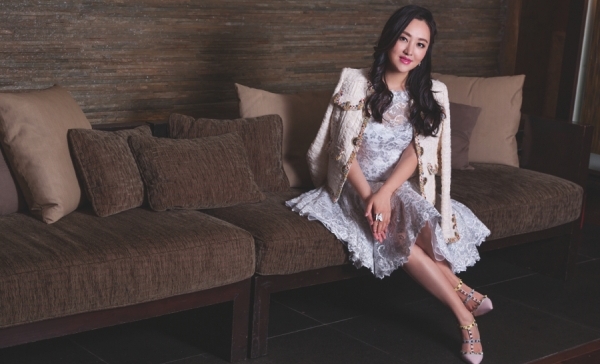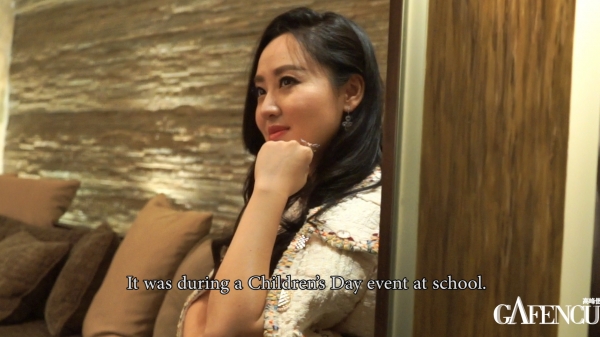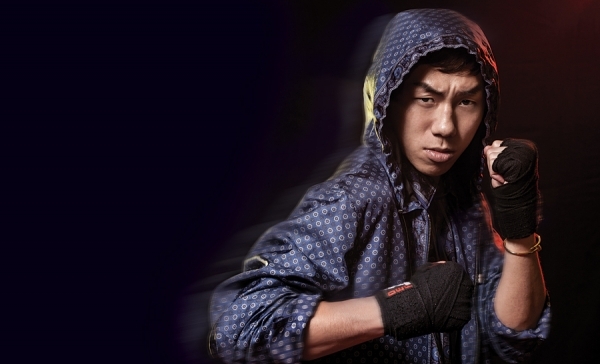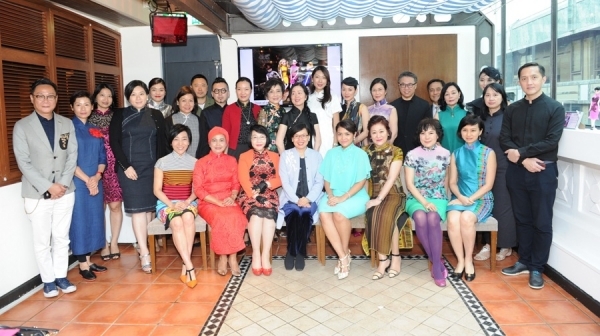
Singer Charlene Chou Xuan, dubbed the “new golden voice” of China, is known for her unique style of music, which blends Western and Eastern elements. Originally from Hangzhou, she now lives in Hong Kong and runs the Zhou Xuan Arts Centre, which she founded.
Click here to watch the video
Were you named after the iconic Chinese singer and actress with whom you share a name?
My name was given to me by my mother. Zhou Xuan was a famous singer in the ‘30s, and she is my mum’s idol. My mum loves all of her songs, and so that’s the story of how I got my name.
I was born into an artistic family. My mum was a music teacher, and my dad was an art instructor. They are ordinary people who love music and dance. I was fortunate to grow up in such a warm and happy environment.
When did you first know that you wanted to be a singer?
My first stage performance was when I was three years old during a Children’s Day event at school. Even as a child, I never felt stage fright. I remember singing one song after another that day. It was then that my parents discovered my talent.
When did I decide to become a professional singer? It was probably when I enrolled at the Zhejiang Vocational Academy of Art. I was about 12 at the time. Now, here I am. I often have the chance to perform on TV and at a number of concert halls around the world. Various media have named me one of the top 10 female sopranos in China. They call me the ‘new golden voice,’ which I am very proud of. I will always try my best to live up to that title.
What has been your most memorable performance?
My first concert ever was held at the Hong Kong Cultural Center on 16 November 2005. There I was, just a girl from Hangzhou performing in the big city. I never would have imagined back then that I’d move to Hong Kong one day. It must have been fate that brought me here.
During my first concert, I was very nervous because I was under a lot of pressure. It was my first time performing professionally on-stage, let alone an international stage. Fortunately, the show was perfect. After the concert, people came up to ask me for photos and autographs. My first concert was a success and an unforgettable experience.
Who are your musical idols and inspirations?
My mum was my first music tutor. I listened to her songs throughout my childhood. I had many other instructors during my formative years, including Professor Jin Tian Lin, who also mentors China’s First Lady, Peng Liyuan, who happens to be a contemporary folk singer.
I have also had the opportunity to meet and collaborate with some exceptional artists, including Lü Jihong, Zhang Ye, Liao Changyong and Dai Yuqiang. We have become very good friends. I also look up to Li Guyi, a well-known singer in China.
What kind of music do you listen to?
I love all kinds of music. I studied Chinese national music at college, but I also listen to Italian music across the genres of bel canto, opera and pop. I have made an effort to learn diverse styles of music. I hope that my songs appeal not only to Chinese, but also to international audiences. I believe that music has no borders.
How do you manage to blend such diverse elements from Chinese and European music?
I take some artistic liberties in my music. For instance, in one song I combined the Italian aria Nessun Dorma with the Chinese folk song Mo Li Hua (Jasmine Flower). I sing in two languages in that song, and foreign audiences love it. Now, I am trying to combine songs from Madama Butterfly with Taiwanese pop singer Teresa Teng’s songs. Teng was known for her folk songs and romantic ballads.
You travel a lot for shows. How is Chinese music received in other countries?
When performing abroad, I sing both Chinese and foreign songs. As long as the songs are good, music is an international language. Many foreigners have been moved by my music. They loved my songs, even though they didn’t understand the lyrics. That is what I mean when I say music has no borders.
Do you enjoy working abroad?
I do. It gives me the chance to visit new places, and it’s just like a vacation. Italy in particular is one of my favourite places to perform. I often travel to Italy with my family on holiday. There are so many delicious types of food, beautiful landscapes, classic architecture and shopping malls.
As for my family, they have been very supportive of my career, and they love music as well. I have an adorable son, and a daughter who is almost one-year-old.

What’s life in Hong Kong like compared with your hometown?
My hometown is Xi Hu (West Lake) in Hangzhou. Xi Hu is considered a paradise in China. The landscape is beautiful, and it’s a UNESCO World Heritage Site. I was chosen to sing a song dedicated to Xi Hu. If you have a chance to visit the city, you will hear my song as soon as you get off the plane. They play it all day long in the airport and on buses in the city.
Life is very relaxed in Hangzhou because it’s important to the locals to enjoy life. They walk around Xi Hu and have tea time with friends. It’s a slow-paced way of living. Hong Kong, on the other hand, is a very busy city. Everything is fast. After a long week spent in Hong Kong, I like to fly to Hangzhou for the weekend, just to slow down a bit – to rest and enjoy life.
You have opened your own music centre in Hong Kong. What inspired you to enter the field of education?
I opened my art centre last November. It’s something I have always wanted to do. My ambition is to promote Chinese art education in an effort to encourage children who have a passion for music. We offer lessons in dance, piano and violin, as well as vocal training in traditional Chinese music. The centre is for both children and adults. My youngest student is three years old, and the oldest is 70. I also set up a Hong Kong-China musical exchange association. It’s responsible for art education and cultural exchanges between Hong Kong and mainland China. We are going to host an event this August.
What has been the biggest challenge you’ve faced?
The biggest challenge has definitely been opening the music centre. Education is a long-term cause. The behind-the-scenes work that no one sees is what is most difficult. My school is like my third baby. It takes great effort and patience to nurture it so that it grows up big and strong.
What’s next for you?
I’ll perform in Eastern Europe with a Chinese delegation in July, on invitation from the Lincoln Center for the Performing Arts in New York City. For 20 days, we will travel around the region on tour. I’m currently preparing to launch a worldwide tour, and right now we’re just waiting on confirmation from the venues. The worldwide tour could last up to one month. We won’t return home until we finish the tour, and we will visit one country after another.
Text: Emily Petsko
























